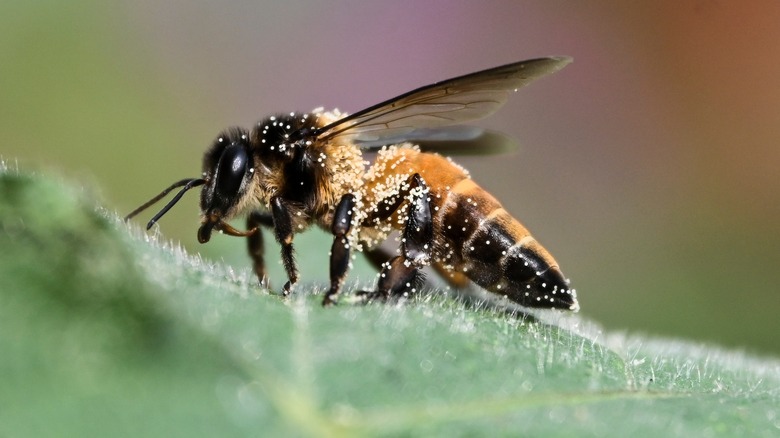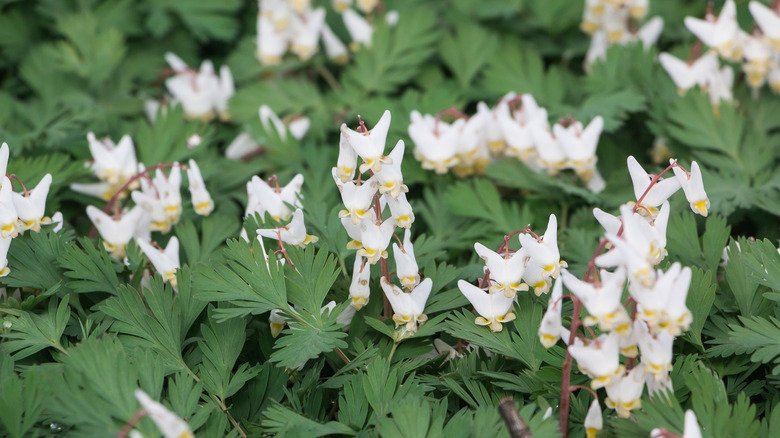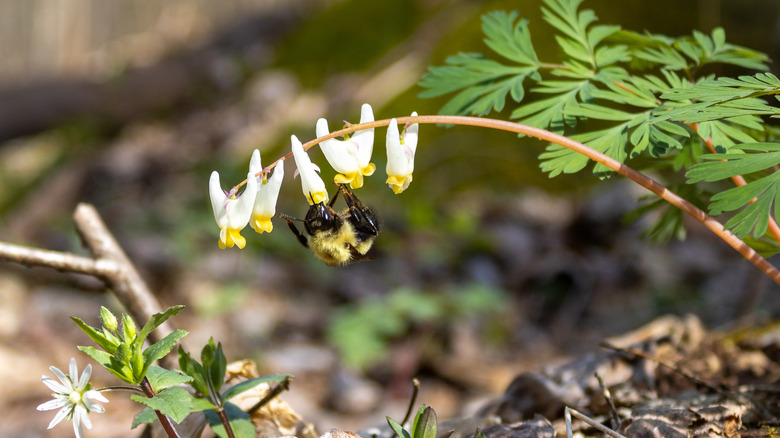The Essential Early Spring Perennial Pollinators Can't Resist
Whether you have come across this article in the depths of a harsh winter or the heart of spring, it is never too early or too late to think about adding a new perennial to your flower bed. This is especially true for Dutchman's breeches, which provide a plethora of support and benefits to your garden, the plants already in it, and any additions to come.
Dutchman's breeches, more scientifically known as Dicentra cucullaria, are known for their easily recognizable flowers, which resemble baggy Dutchman's breeches hanging out on a clothesline. While in bloom through the warmth of late April and early May, Dutchman's breeches attract long-tongued bees like honey bees and bumble bees because of the flowers' sweet nectar. By providing them with the sustenance they need, Dutchman's breeches attract pollinators and ensure that the entire garden is being nourished and tended to.
As a spring ephemeral and perennial, these flowers bloom year after year and require little maintenance. After reaching a height of 6 to 12 inches and blooming in spring, a Dutchman's breeches' greenery diminishes for the season, only to return the following year.
Growing Dutchman's breeches
Incorporating Dutchman's breeches into your flower bed is a no-brainer, right? After you plant them, they do the rest of the work, adding diversity to your garden's little ecosystem and putting on a stunning display when in bloom. Dutchman's breeches are a hybrid of bleeding hearts, and it is important to follow certain guidelines when growing this specific type of flower.
First and foremost, you need to know your climate. Dutchman's breeches and any other type of bleeding hearts should be planted outdoors either early in the fall or after the threat of frost has subsided heading into the spring. Dutchman's breeches form from tubers, which are enlarged root systems that act similarly to tulip bulbs. Once the right time of year comes along in your area, plant your tubers roughly 2 feet apart from one another and 1 inch below the soil's surface. Once planted, water until the soil is soaked and spread protective mulch throughout the flower bed. This added layer ensures that water stays in while also deterring any potential weeds. New plants and seedlings should be watered weekly, but established Dutchman's breeches should only require watering if there is an inadequate amount of rainfall (roughly less than 1 inch each week).
Helping the entire garden
Dutchman's breeches are undoubtedly a great species to establish in your garden, and this is for more than just the aesthetics of a beautiful flowering plant. Just by being present, these spring ephemerals provide substantial benefits to their neighboring plants, especially flowering ones. Dutchman's breeches have a symbiotic relationship with insects like bees and butterflies, supplying them with essential nutrients and, in turn, being pollinated. By attracting these insects to the area, Dutchman's breeches enhance an ecosystem and ensure that the rest of the plants are being tended to by natural pollinators.
Because of the species' physical properties, these plants are also highly durable, allowing you to do minimal maintenance and care while they do the absolute most in benefitting your garden. They synthesize the neurotoxin alkaloid isoquinoline, which serves as a natural deterrent for mammals looking for a snack to munch on. As perennials, Dutchman's breeches do not require yearly planting. They go through an annual cycle, allowing you to enjoy the same plants naturally attracting pollinators to your garden for years to come.


